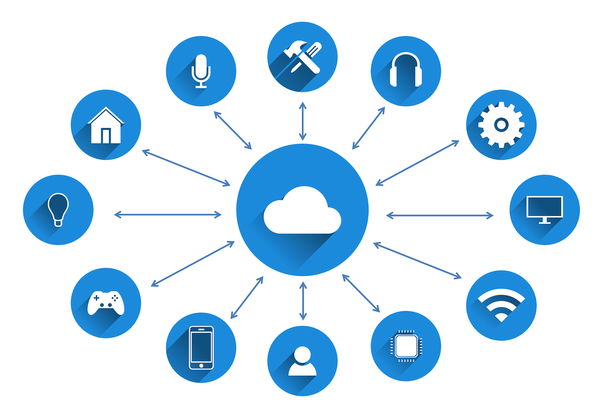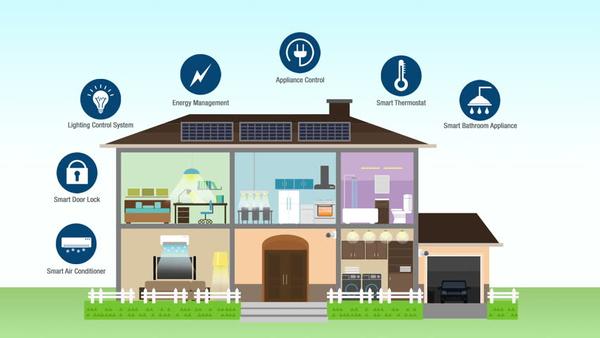Until recently, people with physical disabilities relied on expensive dedicated devices like call chimes and environmental control units to live more independently at home. As the concept of incorporating technology into everyday tasks became more widespread, the price of WiFi-enabled appliances that could be controlled from a smartphone became more competitive and affordable but was still not easily accessible by people with physical disabilities. However, when smart home technology shifted from futuristic utopias depicted in movies to a reality, it wasn’t hard to see how these mainstream technologies could benefit people with quadriplegia the most. Thanks to voice assistants like Siri and switch-enabled devices like tecla-e, off-the-shelf smart home technology can now be fully leveraged by everyone.
Automation

Have you ever set a timer for an activity and left the room to relax without ever checking the clock? If you or a loved one enjoys cooking or baking in the oven, you most likely know the convenience of automation through timers. This simple concept is one of the best ways to control your home with smart devices and a feature that makes them accessible for everyone. With automation, you can set specific actions to occur every day at the same time, and even group multiple actions together. For example, with Philips Hue smart lights, a Nest Thermostat, and a Logitech Harmony Hub, you can create an activity so that every evening at 9:00 pm, the lights in your bedroom dim while the temperature decreases for a cool sleep. All without touching a button.
Alexa for Nonverbal Folks
As you can imagine, this holds great potential for users with quadriplegia, who cannot operate traditional lights or thermostats independently. One problem that arises with controlling your home through intelligent voice assistants is that AI is only able to recognize patterns in speech that they were specifically trained to hear. So, for a user that has a speech impairment, Alexa and Home are virtually inaccessible. However, with tecla-e and its companion app, Alexa is integrated to allow users to type in a question or command in the text query feature to gain all of the powerful voice assistant’s functionality. Check out our other blog on how users with speech impairments can access Alexa.
tecla-e is a cloud-connected assistive device that connects people with cerebral palsy, multiple sclerosis, ALS, muscular dystrophy, and other conditions that affect dexterity with their smart devices. With the adaptive switches they are familiar with, they can access apps independently and have complete control of mainstream devices. Not only do Tecla users have control over their automating settings and access their WiFi-enabled appliances from applications, they can also assign a command to their adaptive switch to activate or deactivate a smart device with one touch.
Smart Alternatives that Make Traditional Home Appliances Accessible

Image Source – (ConvertSight)
We mentioned Philips Hue as one of the top products for smart lighting and Nest for temperature control, but what other aspects of your home can you use your voice or smartphones to control?
- Blinds: automated smart blinds can both eliminate manual cords and the need for alarms to use natural sunlight to wake you up.
- TV media devices: Apple TV makes it possible for switch users to stream movies and TV shows using Switch Control on macOS while Chromecast can be fully accessible through an app on your smartphone or tablet.
- Air Quality: devices like Awair make it possible to understand how the air in your home may affect your health by tracking dust, chemicals, carbon dioxide, humidity, and temperature.
- Stereos: WiFi-enabled speakers like Sonos allow you to play music on streaming apps like Spotify or Youtube and control the volume on your TV through your smartphone.
- Kitchen appliances: whether it’s WiFi-enabled toasters, fridges, or coffee makers, smart appliances are making it easier for people with physical disabilities to help with food preparation.
If you’re slowly transitioning your home into becoming an accessible smart home, a great place to start is with Smart Plugs, which transform your old appliances into smart devices. With the Wemo Switch Smart Plug, you can plug in your portable fan or bedside lamp and be able to control it from wherever you are through your smartphone. With more independent living centres like Calgary’s Inclusio and Boston’s Leonard Florence Center for Living popping up that are fully equipped with smart home devices, more and more people with disabilities will have access to homes they can interact with independently.
Related Blogs:
** This post was originally published on https://gettecla.com/blogs/news/smart-homes-are-accessible-homes

